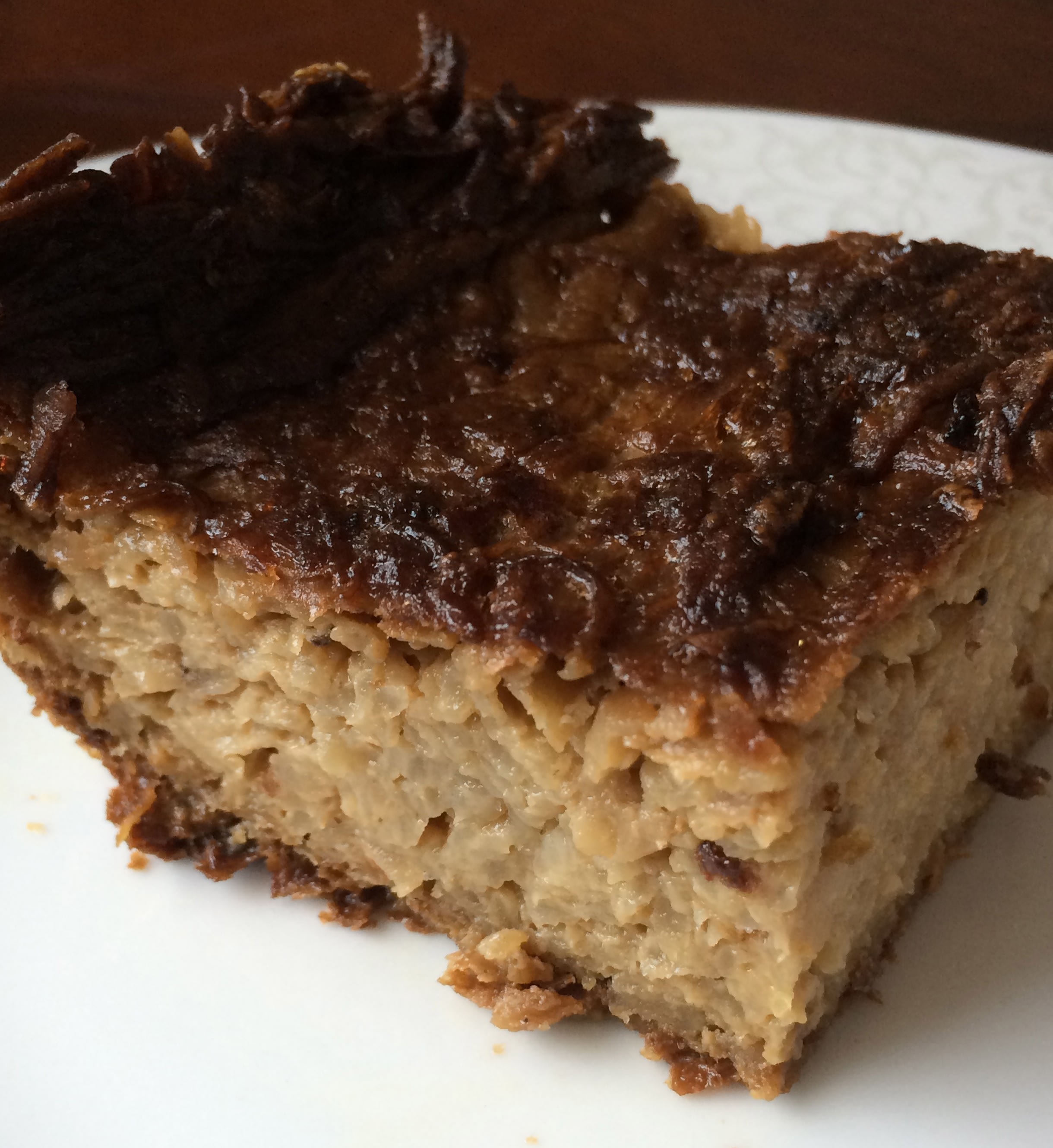
A question came in to the KITCHENer Rebbe, after reading the column Seeker of Lost Recipes, Restorer of Dreams asking about ‘potatonik’. I was inspired. I myself had never heard of Potatonik until I moved to Toronto where I found out it is another name for potato kugel (or kigel, depending where your ancestors came from). When I have to explain what a kugel is to non-Jews who have my cookbooks, I say it is a pudding usually made from potatoes or noodles. This often leads to a request for an invitation for dinner so they can sample it!
My late mother-in-law made a greyish-colored flat potato kugel that was very thin, crispy and quite yummy, made with grated potatoes, onions, eggs, flour and seasonings. She heated the oil in a casserole in the oven until it was piping hot, then added the potato mixture and baked the kugel for an hour. My mother preferred to make her potato kugel from mashed potatoes, eggs and fried onions because that’s how her mother made it – Mom’s kugel was always “puchedick” (light and airy).
I questioned some of my Toronto friends but none of them ever heard of making potato kugel with yeast. My friend Cheryl Goldberg felt that everyone had their own way of making things, depending on what was traditional in their family and where they came from. “Families were much bigger then and so they used what they could.”
My friend Helene Medjuck makes her Shabbat potato kugel in a deep baking pan. It is very thick, with a crunchy crust because she bakes it overnight in the oven. Her family loves it that way – the crustier, the better.
Tolsa Greenberg told me that her husband Jack’s family came from Russia and always bragged about their potatonik, but it actually was the same thing as what her family made and called kugel. Her late mother-in-law even taught the Japanese cleaning lady how to make it when she needed help with her yom tov cooking! Tolsa told me that in her in-law’s family they baked their potatonik for a very long time, until it became dry and crusty but she bakes hers much less and so it comes out higher and moister, not “oysgetrickent” (dry).
Norene Gilletz is a cookbook author, cooking teacher and food consultant based in Toronto, Canada. Her latest book is NORENE’S HEALTHY KITCHEN: Eat YOUR Way to Good Health (Whitecap). For information about her cookbooks, cooking demonstrations and culinary services, call 416-226-2466 or visit her website at http://www.gourmania.com
The words of this author reflect his/her own opinions and do not necessarily represent the official position of the Orthodox Union.

